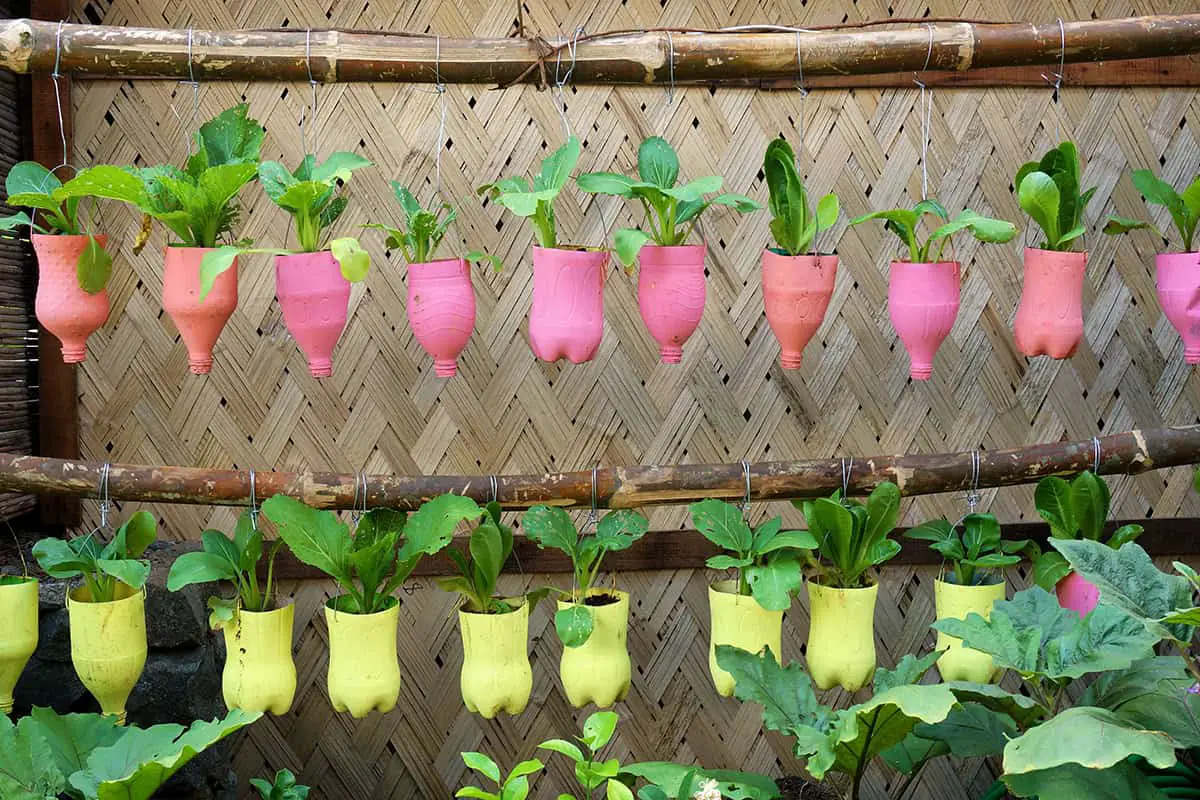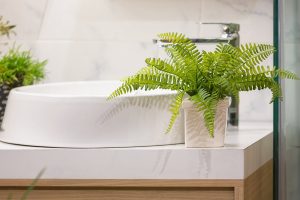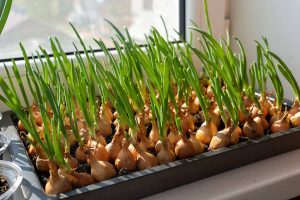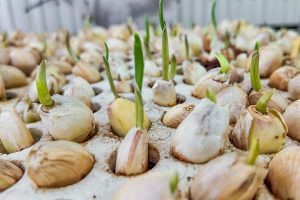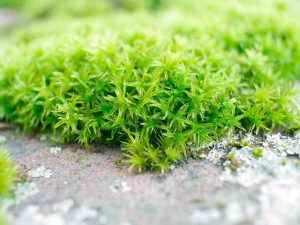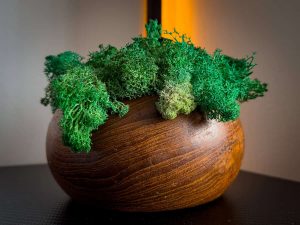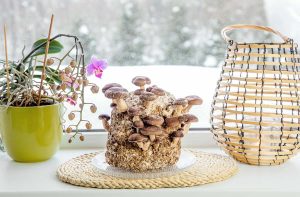You’re running out of shelf and floor space for your growing plant collection, and your home is starting to feel cluttered. Hanging your plants can free up space while adding a unique touch to your decor. Here are 15 innovative techniques for plant hanging that will not only save space but also enhance the aesthetic appeal of your home.
Table of Contents
Macramé Hangers
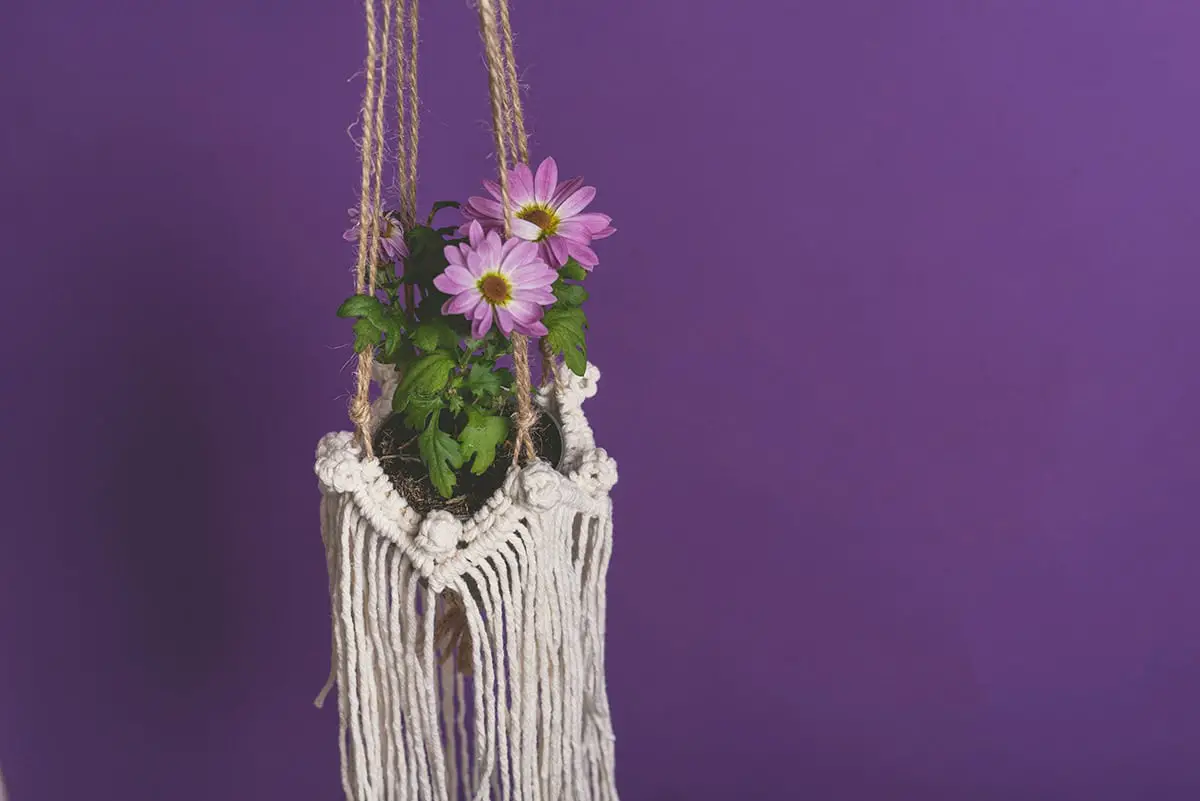
Macramé hangers offer a stylish way to display your plants. These hangers can be crafted to fit your aesthetic. They use simple knots and patterns to create intricate designs.
To make a macramé hanger, you need basic materials. Gather a sash cord, scissors, and a plant pot.
Choose cords that match your decor. For beginners, a cotton cord is ideal. It’s easy to handle and knot. Advanced users can experiment with jute or nylon.
Different knots create diverse designs. Common knots include square, half hitch, and lark’s head. Each knot adds texture and uniqueness.
A macramé hanger can be customized. Adjust the length, color, and pattern. This allows you to create a truly unique piece. Crafting these hangers can be relaxing and rewarding.
Safety is important. Ensure your hanger is strong enough to hold your plant. Use sturdy hooks for hanging from ceilings or walls.
If you’re new to macramé, start simple. As you gain confidence, try more complex designs. Macramé hangers can add a personal touch to your home decor.
Floating Shelves
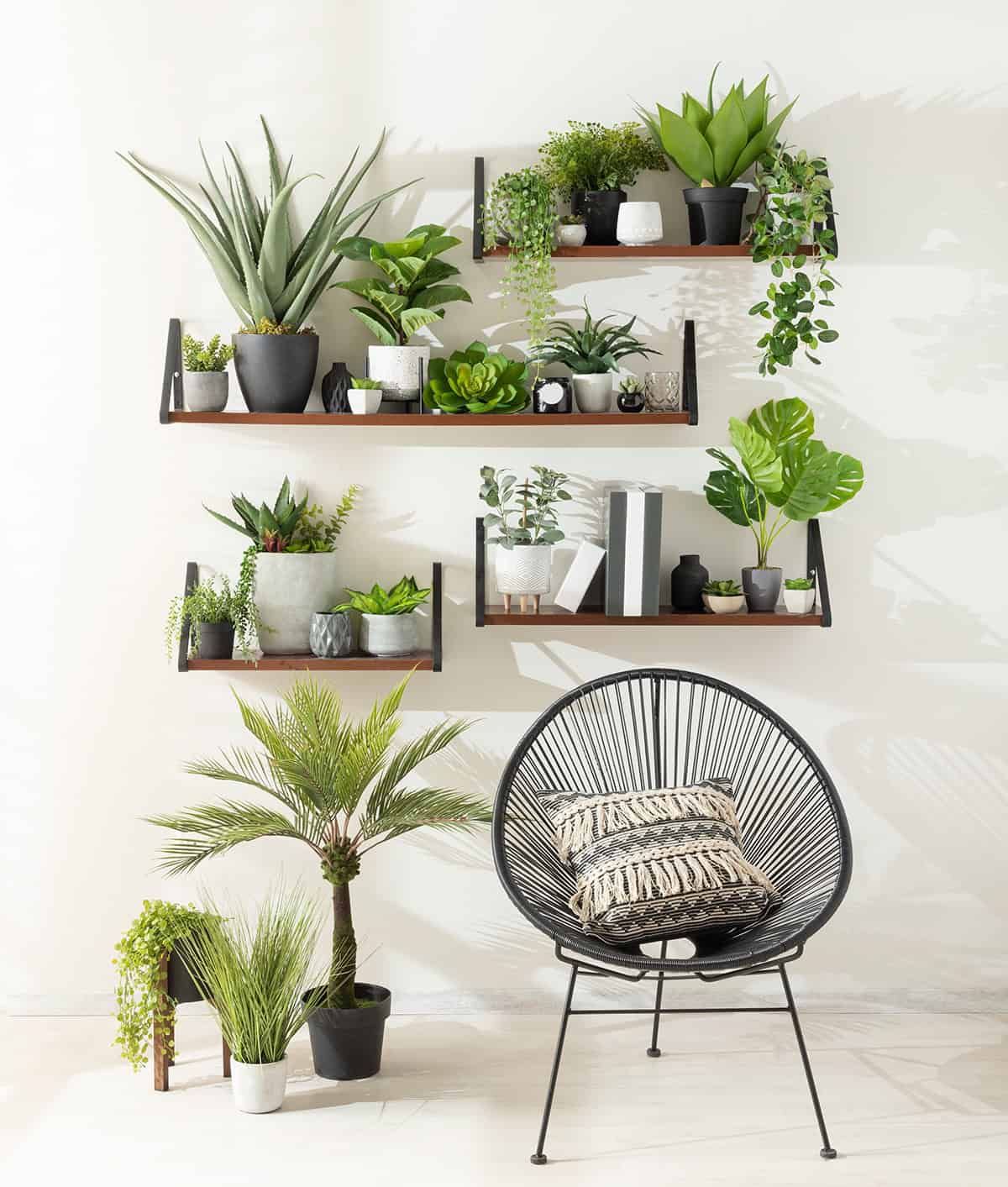
Floating shelves offer a creative way to hang plants. They provide storage without heavy furniture. You can use them to display a variety of plants. Choose shelves that match your decor for a seamless look.
Install the shelves securely. Use appropriate brackets or anchors to ensure stability. Position them at varying heights for visual interest. Place trailing plants on higher shelves. This allows them to cascade down beautifully.
Different materials work well for floating shelves. Wood, metal, and glass are popular choices. Each material brings a unique feel to the space. Wooden shelves add warmth, while metal provides a modern touch.
Consider shelf size and weight capacity. Ensure that the shelf can support your plants. Avoid overloading to prevent accidents. Lightweight plants are ideal for higher shelves.
Arrange plants thoughtfully. Group plants with similar care needs together. This makes watering and maintenance easier. Use a mix of plant types for diversity. Combine trailing vines, succulents, and small potted plants.
Lighting is important. Place floating shelves near windows. Ensure that your plants get enough light. Use artificial lighting if natural light is lacking. LED grow lights can supplement your setup.
Cleaning and upkeep are essential. Dust the shelves regularly. Check plant health and remove dead leaves. Keep the area tidy for a neat appearance.
Hanging Planters
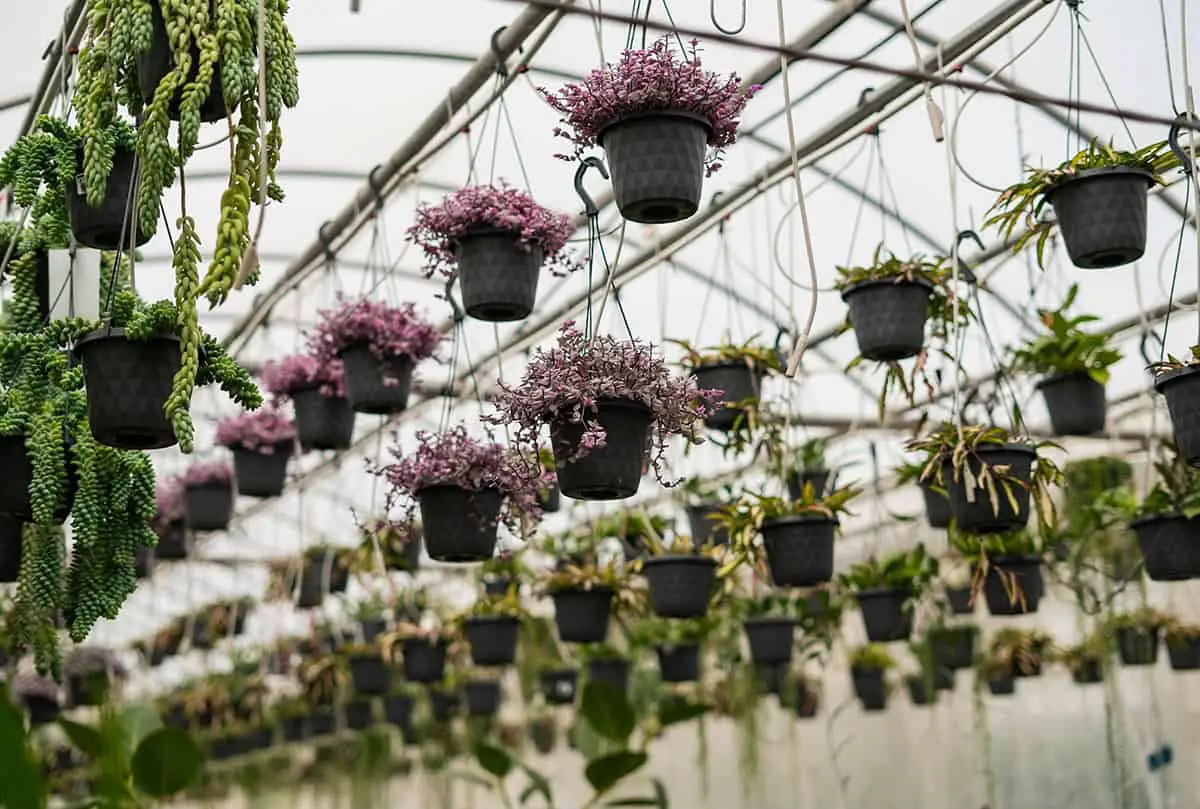
Hanging planters add charm to any space. They’re perfect for small areas. Use them indoors or outside.
You can make hanging planters from fabric scraps. Cut 8 strips of fabric, each 2-feet long. Tie them at one end. This creates a durable holder for your plants.
Choose the right size for your plants. Smaller baskets, 12 to 14 inches, fit 3 to 5 plants. Larger ones, 16 to 18 inches, hold 5 to 7 plants.
Materials like moss or coir liners are also good. These materials offer good drainage. Poke small holes in the liners to plant additional plants on the sides.
Planting a mix of annuals and perennials works well. Options like lobelia, osteospermum, and periwinkle are great choices. They provide vibrant colors and thrive in hanging baskets.
Watering is essential for hanging baskets. They may wilt by the end of the day if not well-watered. Ensure you water them thoroughly. Placing the basket on the ground can help water reach the roots efficiently.
Pair native plants with showy, non-native flowers. This gives you a beautiful display with lasting blooms. It also supports local biodiversity.
Ladder Plant Stand
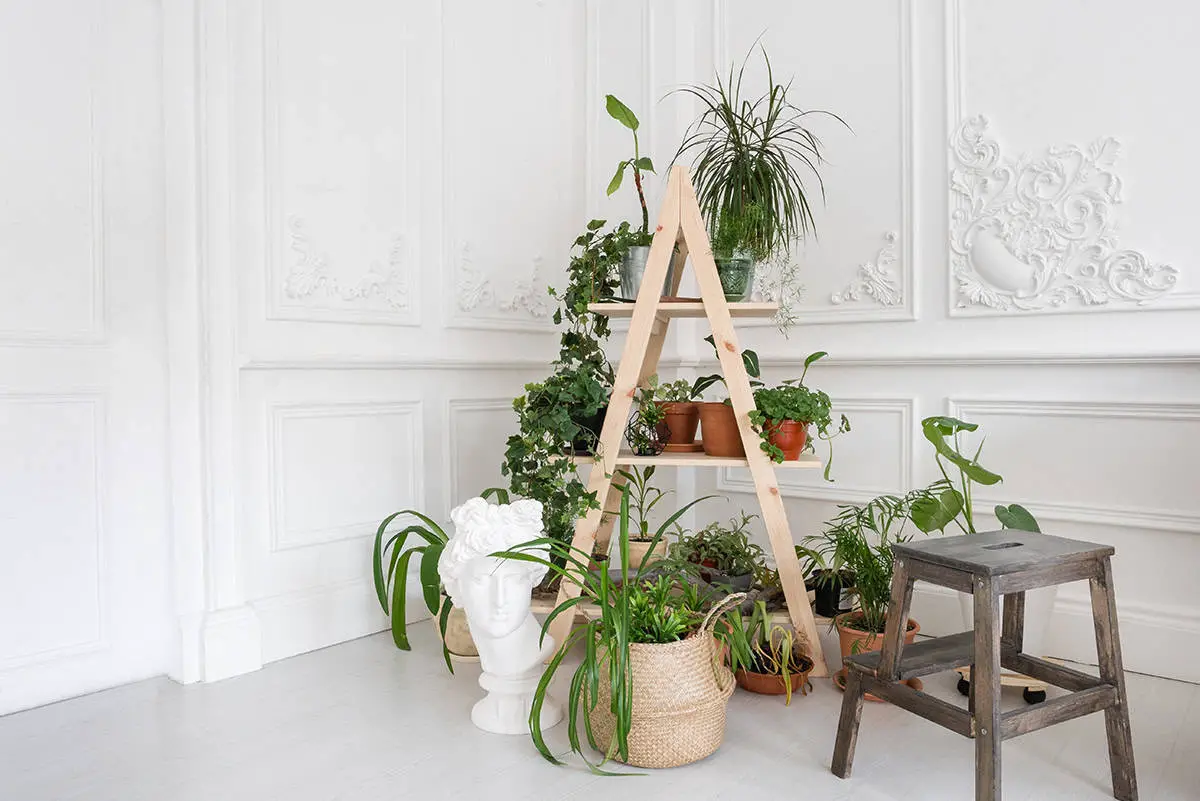
Using a ladder plant stand offers a unique and practical way to display your plants. This creative solution can fit into various home decors, adding both charm and function.
Find an old ladder or purchase a new one. Ensure it is stable and has wide, sturdy steps. Paint it to match your home’s aesthetic or keep its rustic look for a vintage vibe.
Arrange your plants by size and type. Place larger pots on the bottom rungs for stability. Smaller plants can go higher. This tiered arrangement ensures all your plants get adequate light and attention.
For added effect, mix different types of pots. Terracotta, ceramic, and metal pots each bring their own style. Match or contrast these for an appealing display.
Utilize plant clips or hangers for trailing plants. Secure them on the ladder’s sides to make the most of vertical space. This adds depth and dimension to your stand.
A ladder plant stand is versatile. Use it indoors in your living room, kitchen, or even bathroom. Take advantage of natural light from windows.
Wall-Mounted Planters
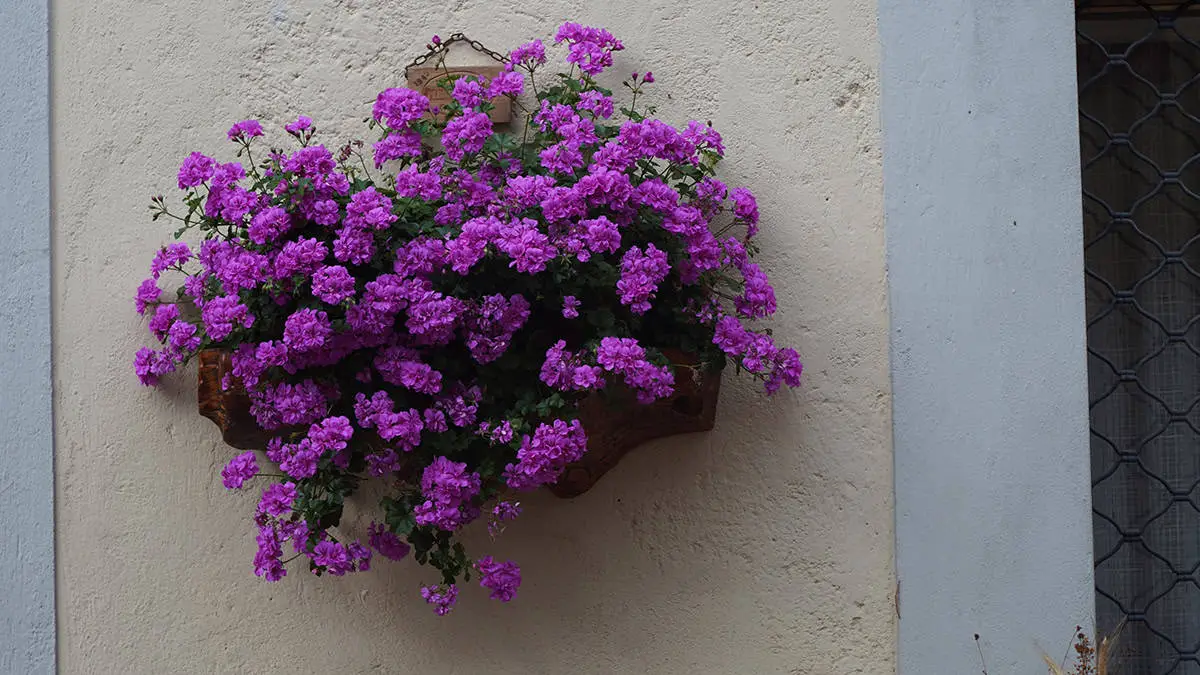
Wall-mounted planters are a space-saving solution for plant lovers. These planters attach directly to your walls, freeing up floor space. They allow you to create a vertical garden indoors or outdoors. This method is perfect for adding greenery to small or crowded areas.
You’ll find wall-mounted planters in various materials, including metal, ceramic, and fabric. Metal planters are durable and give a modern look. Ceramic planters are stylish and come in many designs. Fabric pockets are lightweight and easy to hang.
Choose your wall-mounted planters based on the type of plants you wish to grow. For instance, herbs and small flowers thrive in fabric pockets. Succulents and cacti do well in ceramic planters. Metal planters are suitable for trailing plants.
Ensure your wall can support the weight of the planters, especially when they are filled with soil and plants. Use strong hooks or brackets for mounting. This secures your planters and prevents accidents.
Consider the light requirements of your plants. Place the planters on walls that receive appropriate sunlight. Some plants need direct sunlight, while others thrive in indirect light. Get creative with your arrangement for an aesthetically pleasing display.
Maintaining wall-mounted planters is straightforward. Water them carefully to prevent water damage to your walls. Check for proper drainage to avoid root rot. Regularly prune and care for your plants to keep them healthy and vibrant.
Plant Chandelier
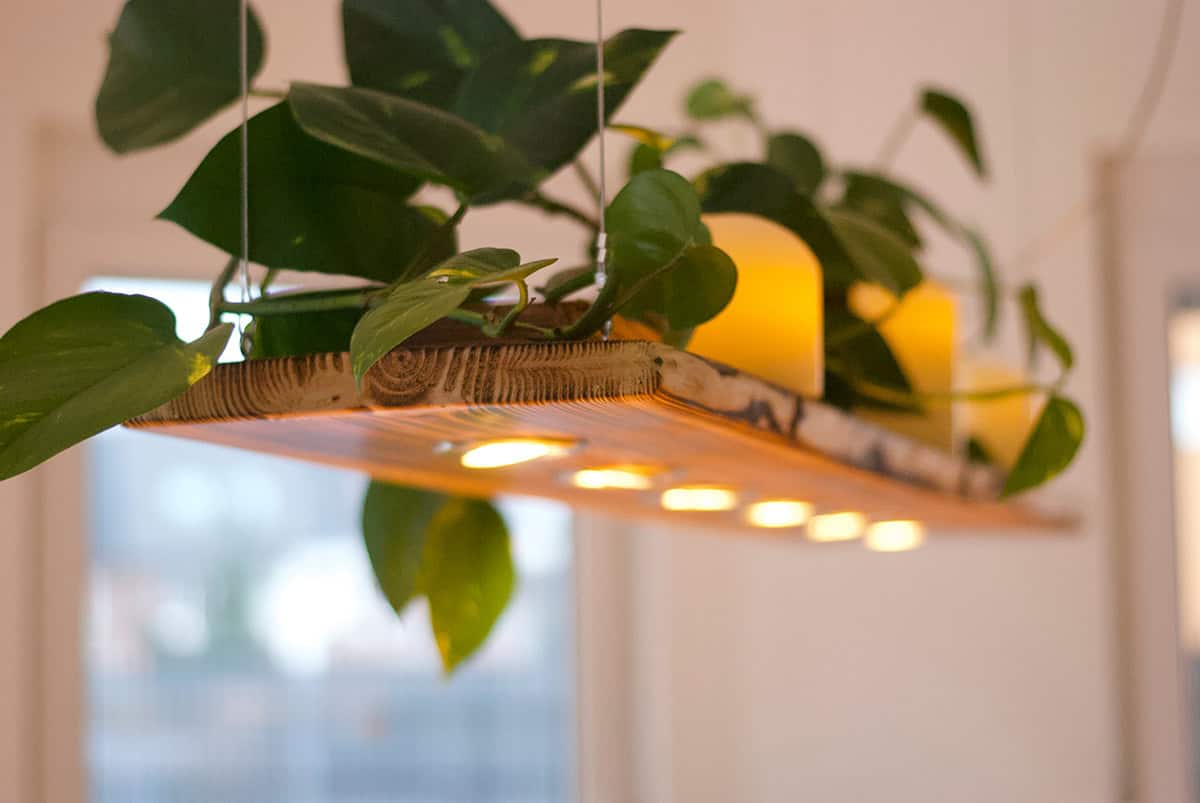
A plant chandelier creates a beautiful focal point in any room. This hanging garden artfully combines multiple plants in a single structure, resembling a traditional chandelier.
Using a mix of plants adds depth and variety. Variegated foliage, colorful blooms, and trailing vines work well together.
Consider low-maintenance plants for this setup. Succulents, ferns, and air plants are excellent choices. They thrive with minimal care.
You can make a plant chandelier using a wireframe or an old light fixture. Attach small pots or baskets to the frame securely.
Ensure the chandelier is hung in a spot that meets the light needs of your chosen plants. Direct sunlight may suit some plants, while others prefer indirect light.
Watering can be simple. Use a spray bottle for air plants or a watering can with a long spout for potted greenery. Keep an eye on moisture levels to avoid overwatering.
The plant chandelier brings the outdoors inside. It serves both as a decorative piece and a functional way to grow plants.
Explore creative materials. Vintage frames, bamboo, or wood can add a unique touch. Painting the frame can also bring cohesion to your indoor decor.
Enjoy the calming influence and aesthetic appeal of your plant chandelier. It’s a wonderful addition to any living space, creating a serene and vibrant atmosphere.
Hanging Mason Jars
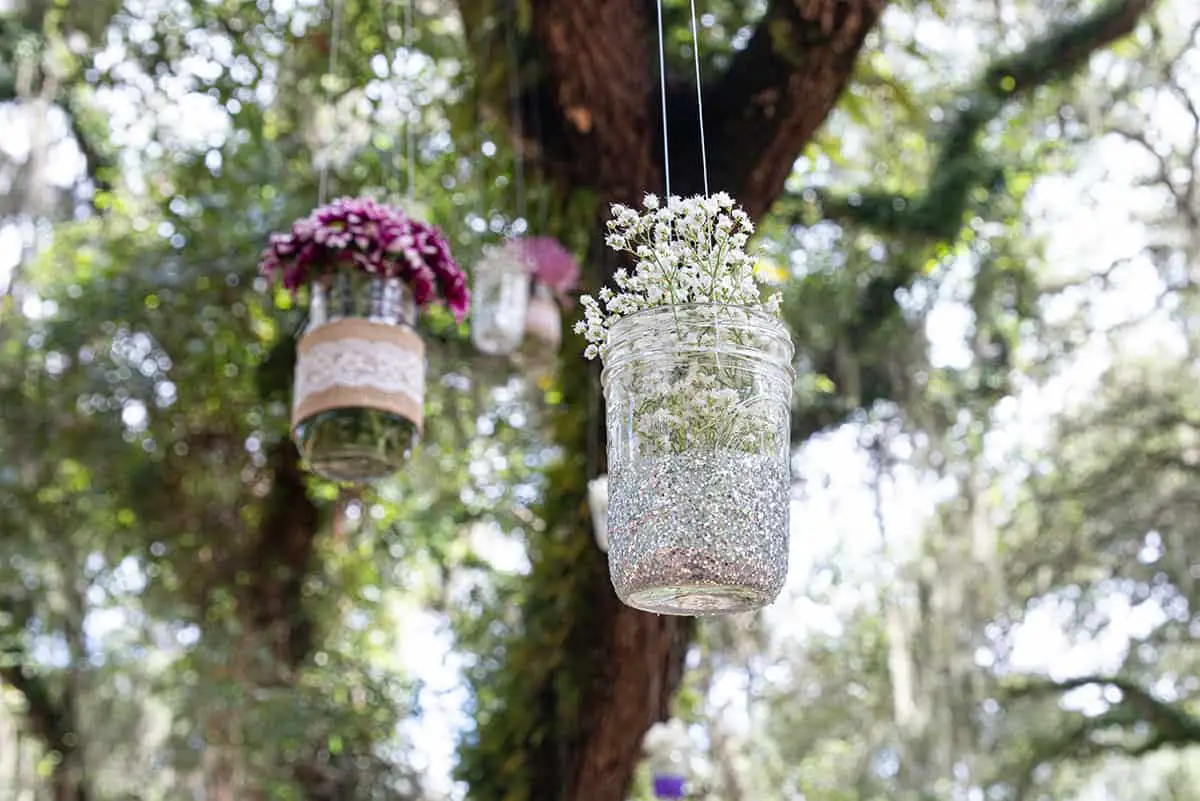
Hanging mason jars offer a stylish and practical way to display plants. To create a hanging mason jar planter, start by choosing jars that can hold your plants.
Materials needed:
- Mason jars
- Soil
- Plants or seeds
- Twine or metal wire
- Hooks or wooden plank
Decorate your jars before you hang them. Use paint, stickers, or any adornments you prefer. After decorating, fill the jars with soil and plant your seeds or small plants.
Attach twine or metal wire around the neck of each jar. Make sure it’s secure enough to hold the weight of the soil and plant. Leave enough length to create a hanging loop.
Decide where to hang your jars. You can use ceiling hooks or attach them to a wooden plank. If using a plank, fix it to the wall first. Hanging near a window works best for plants that need light.
Regularly check your plants. Water as needed. Make sure the soil stays moist but not waterlogged. Hanging jars might dry out quicker than other planters.
For a more organized look, consider spacing your jars evenly. Create a pattern if you’re using multiple jars. This adds visual appeal and can enhance your room’s decor.
Wall planters using mason jars are a versatile option. You can experiment with different plant types. Whether you choose herbs, succulents, or small flowers, hanging mason jars can create a beautiful green space in your home.
Vertical Garden
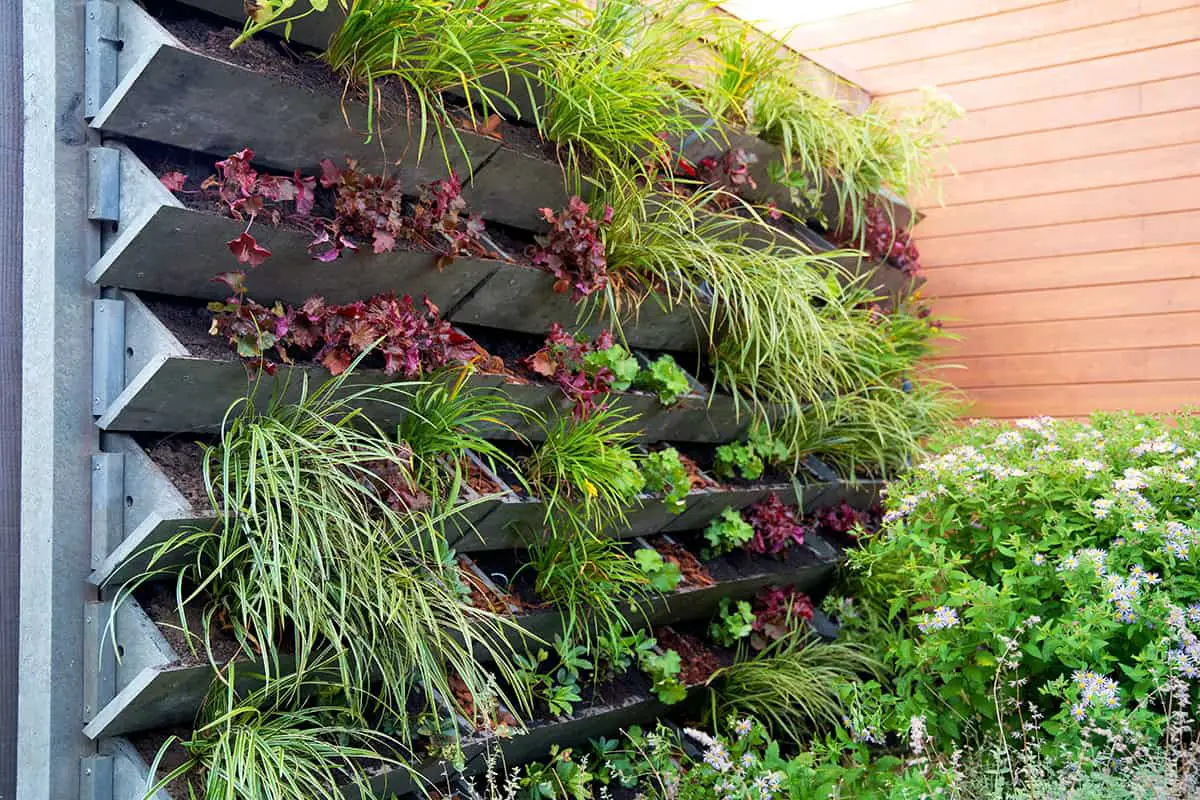
A vertical garden uses vertical space to grow plants. This approach maximizes limited gardening areas, making it suitable for urban environments. You can create a vertical garden on balconies, patios, or small yards.
Various methods can be used to build a vertical garden. Use trellises, stakes, or cages to elevate plant growth. These structures support the plants and allow them to climb.
For vertical gardening, consider using climbing plants such as pole beans, peas, and tomatoes. These plants naturally grow upward, making them ideal for this method. Additionally, non-vine plants like espalier trees can be trained to grow vertically.
Watering is crucial in vertical gardens. Plants in vertical gardens tend to dry out faster due to increased exposure. Regular watering or implementing drip irrigation can help maintain adequate moisture.
Vertical gardens can also incorporate hydroponics. This method uses nutrient-rich water to feed plants without soil. Hydroponic vertical gardens are efficient and can produce high yields in small spaces.
Enhance your garden space by integrating a vertical wall garden. It can include flowering vines on trellises to create appealing visual elements. These gardens can also offer protection from wind, rain, and sun.
Hoop Planters
Hoop planters are a stylish and practical way to hang your plants. These planters use hoops made from various materials such as metal or wood. You can easily adjust them to fit different sizes and types of plants.
To create a hoop planter, start with a sturdy hoop. You might use a metal ring or a wooden embroidery hoop. Attach your plant container securely to the hoop. You can use ropes, cords, or even fabric strips.
For a unique look, use multiple hoops for a layered effect. Stack smaller hoops inside larger ones, each holding a different plant. This method creates a visually appealing and space-efficient display.
Hoop planters are perfect for trailing plants like ivy or philodendrons. These plants will grow and drape over the hoop for a natural, cascading effect. When choosing plants, consider their light and watering needs.
You can hang hoop planters from ceilings or wall brackets. Ensure they are securely fastened to avoid accidents. Regularly check the stability of both the hoop and hanging mechanism.
One benefit of hoop planters is their versatility. You can easily switch plants or containers without major rework. This flexibility allows you to experiment with different designs and plant combinations.
If desired, decorate the hoops themselves. You can paint, wrap them in colorful fabric, or adorn them with beads. This adds a creative and personalized touch to your indoor garden.
Creating a hoop planter is an enjoyable project. It can fit any decor style and provides a unique way to showcase your favorite plants.
Grid Wall
A grid wall is a versatile way to hang plants. It is both functional and decorative. You can easily install it on most wall types.
You can find grid panels in various sizes and finishes. Choose one that complements your decor. Mount the grid wall securely to ensure it can bear the weight of the plants.
Use hooks and clips to attach plant pots to the grid wall. This allows flexibility to arrange your plants as you like. You can change the layout easily without much hassle.
Hanging plants on a grid wall also helps to save space. It is ideal for small rooms or apartments. By using vertical space, you keep the floor area clear.
You can place the grid wall near a window. This ensures your plants get adequate sunlight. For low-light plants, position them in a suitable area.
This method is also practical for herb gardens in the kitchen. It keeps the herbs within reach and organized. You can clip small pots onto the grid for easy access.
A grid wall helps to create a green accent wall. It can transform a dull space into a vibrant one. The visual appeal of lush greenery enhances any room.
Swing Shelves
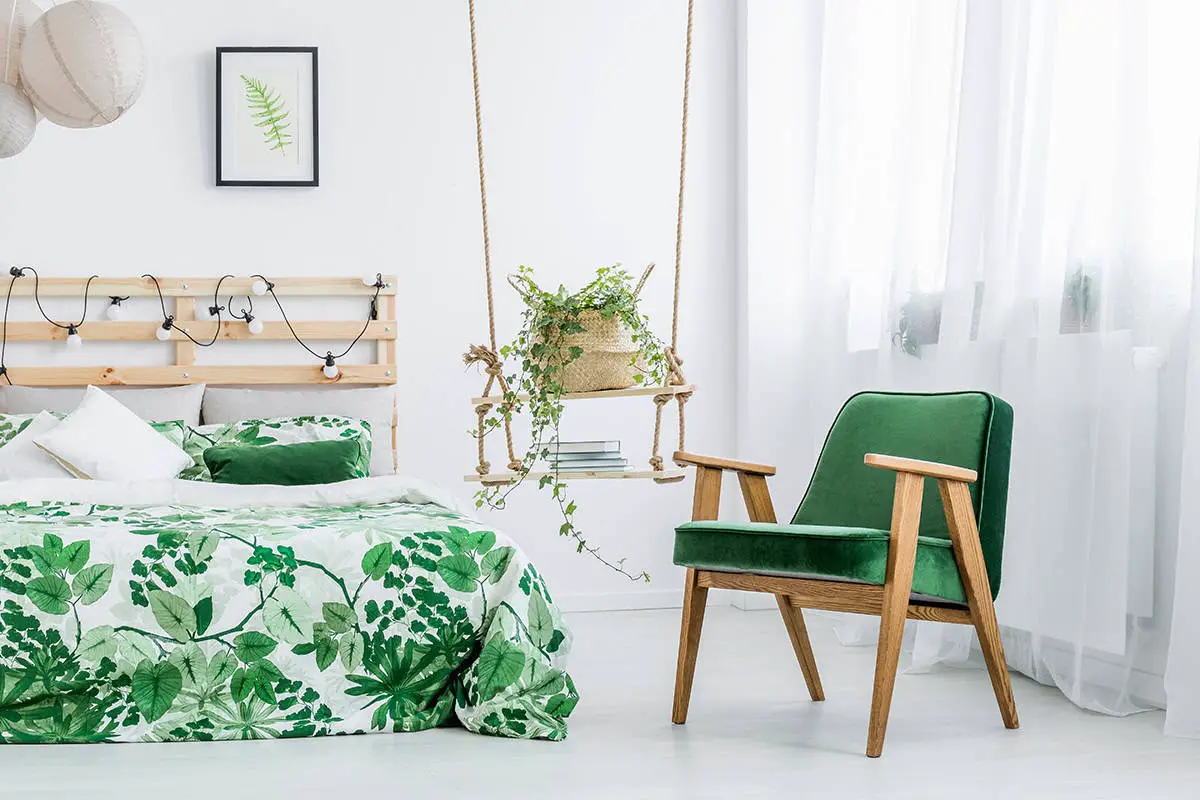
Swing shelves offer a unique way to display your plants. These hanging shelves are suspended from the ceiling with ropes or chains, creating a floating effect.
You can easily adjust the height of swing shelves to accommodate different plant sizes. They add a dynamic element to your home decor. Some shelves even have multiple tiers, providing more space for plants.
Materials for swing shelves vary. Common choices include wood, metal, or glass. Each material brings a different aesthetic to the space. For example, wood adds warmth, while metal provides a modern look.
Installation is straightforward. You need sturdy hooks or brackets to secure the shelves to the ceiling. Make sure to choose anchors appropriate for your ceiling type. This ensures the shelves can support the weight of your plants.
Swing shelves are versatile. They work well in living rooms, kitchens, or even bathrooms. The movement of the shelves can help create a calming, soothing atmosphere.
These shelves also allow for creative arrangements. You can mix plants with decorative items, making the display more interesting and personalized.
Repurposed Light Fixtures
Repurposed light fixtures offer a unique way to hang plants. They add a touch of creativity and sustainability to your space. By using old or unused lighting, you can create functional and beautiful plant holders.
An old chandelier, for example, can be an excellent base for hanging plants. Remove the wiring and light sockets. Then, attach small pots where the bulbs used to be. Now you have a hanging plant display that doubles as a statement piece.
Pendant lights can also be transformed into plant hangers. Simply remove the electrical components and insert a small pot into the shade. This creates space for a plant to hang elegantly.
Vintage light fixtures, like sconces, can be rehung as plant holders. Mount them on the wall and place small potted plants where the bulbs usually go. Your wall will have a stylish and green touch.
Mason jar lights are another great option. If you have mason jar fixtures, you can use the jars to hold small plants. Attach the jars back to the fixtures and hang them up. This makes a charming and rustic display.
When using repurposed light fixtures, make sure the fixtures are securely mounted. The added weight of the plants requires sturdy support. Always check the stability before hanging your plants.
Woven Baskets
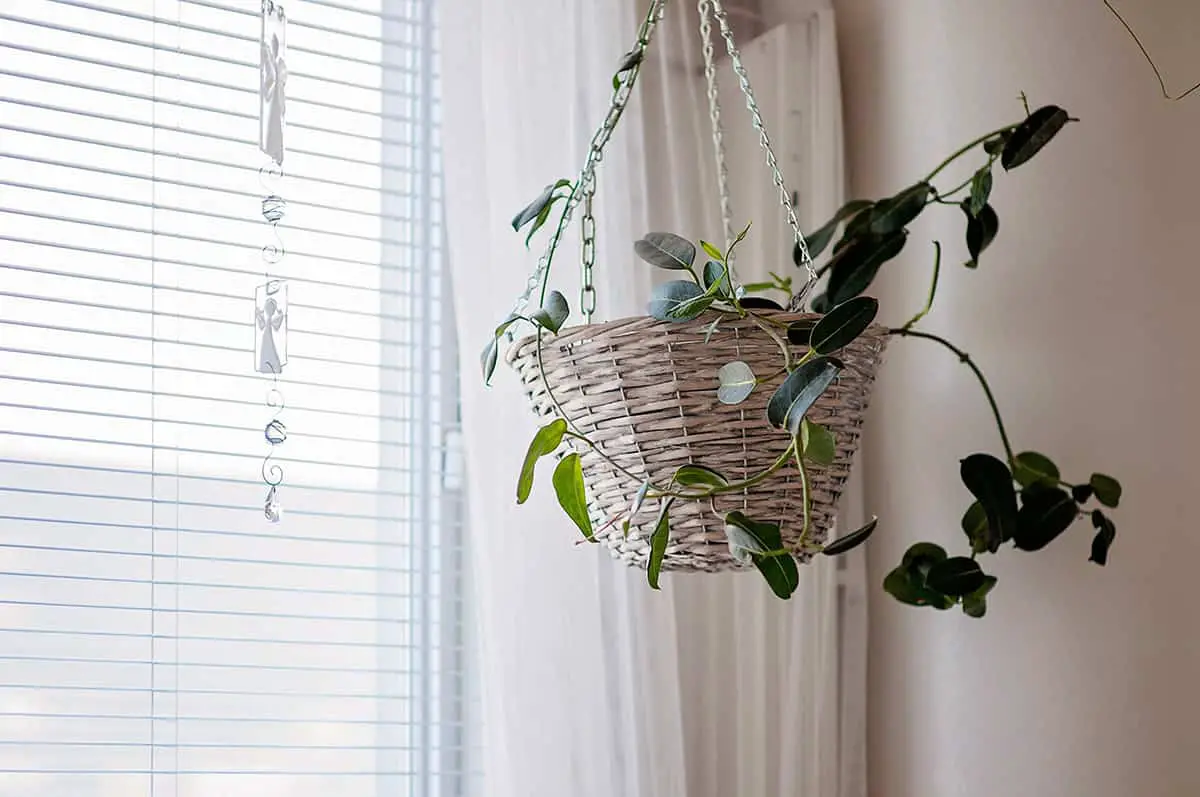
Woven baskets offer a charming way to hang plants. Made from natural materials like rattan or wicker, they create a rustic, earthy vibe. You can easily find these baskets at local craft stores or online.
Select a basket with a sturdy design and enough depth for your plants’ roots. Small woven baskets work well for herbs or succulents. Meanwhile, larger ones can hold flowering plants like begonias or impatiens.
When planting, use a liner to prevent soil from falling out. Moss or coir liners work best. They allow water to drain properly and provide a natural look.
Hanging your woven basket is simple. Use a strong hook and secure it firmly. Then, place the basket where it gets the appropriate amount of light. Some plants prefer shade, while others need full sun.
Water the plants regularly. During hot days, check the soil moisture daily. Woven baskets can dry out quickly, so consistent watering is essential. Fertilize weekly with a soluble fertilizer to keep the plants healthy.
Woven baskets are versatile. They fit well in any garden, patio, or even indoor space. You can easily switch plants according to the season. Cool-season plants like alyssum and pansies work well in cooler months. Warm-season plants thrive in summer.
Hanging Terrariums
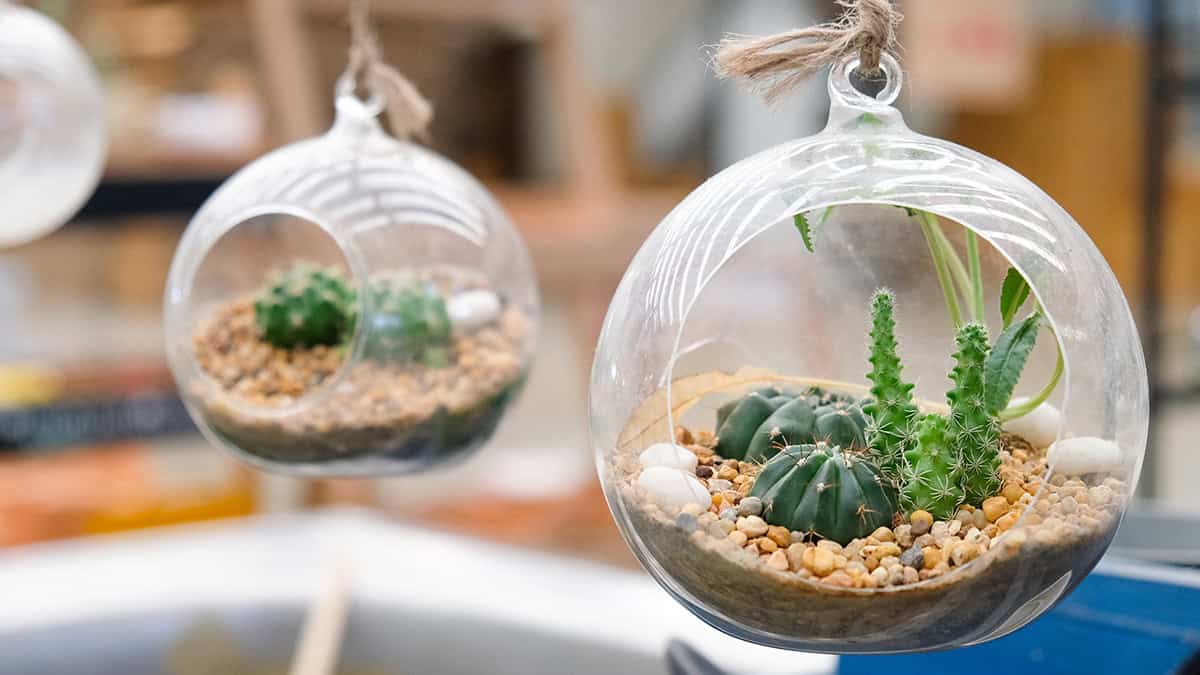
Hanging terrariums are a unique way to display plants. They bring a bit of nature indoors without taking up floor space. Terrariums can hang in windows, on walls, or from ceilings.
To create a hanging terrarium, select a glass container with a flat bottom and a hook or loop for hanging. Containers vary in size and shape.
Begin by adding a layer of rocks at the bottom for drainage. You’ll need soil next, so make sure it’s suitable for the type of plants you choose.
Include air plants for a low-maintenance option. These plants need bright, indirect light. Mist them occasionally to keep them hydrated.
Use small, slow-growing plants to ensure they fit within the container. Good choices are mosses, ferns, and miniature ivies. Avoid succulents and cacti in closed terrariums, as closed environments are too humid for them.
Clean the glass regularly to ensure sunlight can reach your plants.
Upcycled Containers
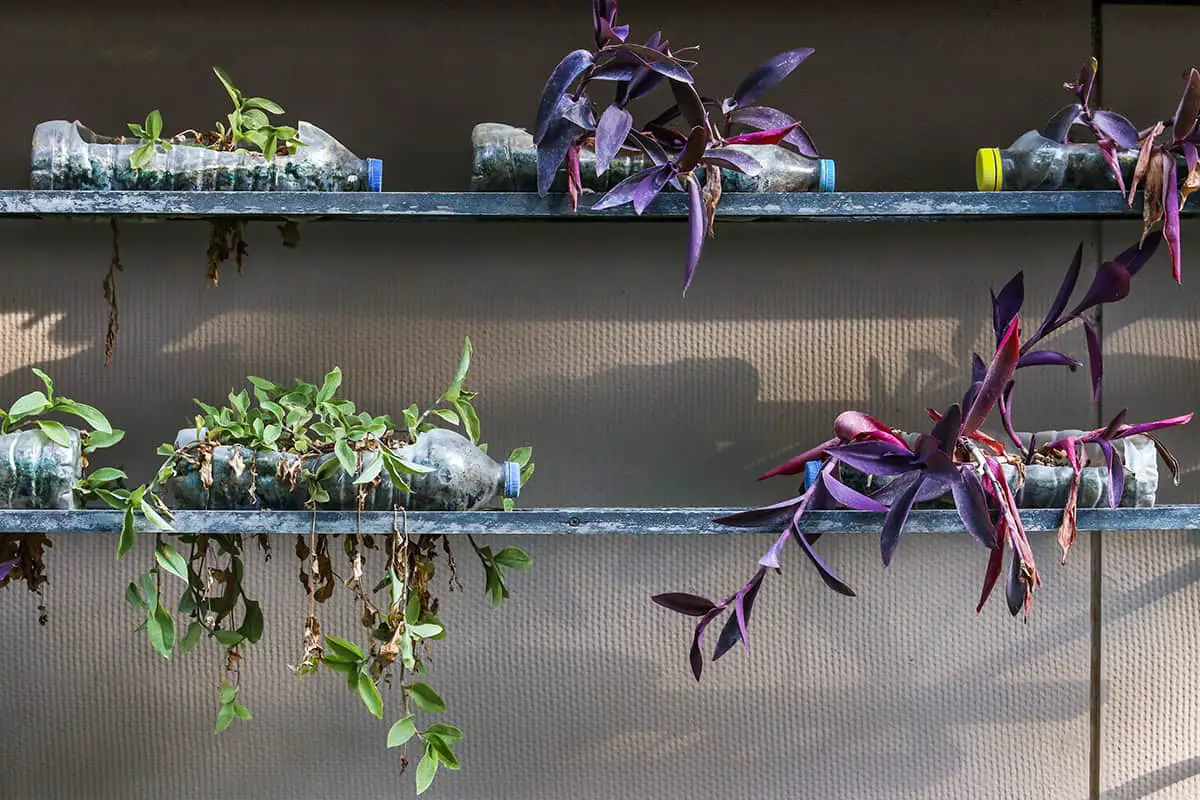
Upcycled containers are versatile. They can be as simple or as elaborate as you wish. This approach not only helps reduce waste but also allows for endless creativity.
Old rain boots make fantastic plant containers. They are durable and colorful. Hang them by their loops and fill them with soil.
Vintage baskets are another excellent choice. They allow for good drainage and provide a rustic look. You can hang them with sturdy ropes or hooks.
Tin cans can be transformed into chic planters. Paint them in bright colors or leave them rustic for a vintage vibe. Punch holes in the bottom for drainage and use string or wire to hang them.
Old teapots add whimsical charm. Hang them by their handles and they will make delightful, quirky planters. Ensure their spouts allow excess water to escape.
Strawberry pots are designed with multiple planting holes. They are ideal for cascading plants that need lots of drainage. Hang them from a sturdy support to enjoy their full potential.
